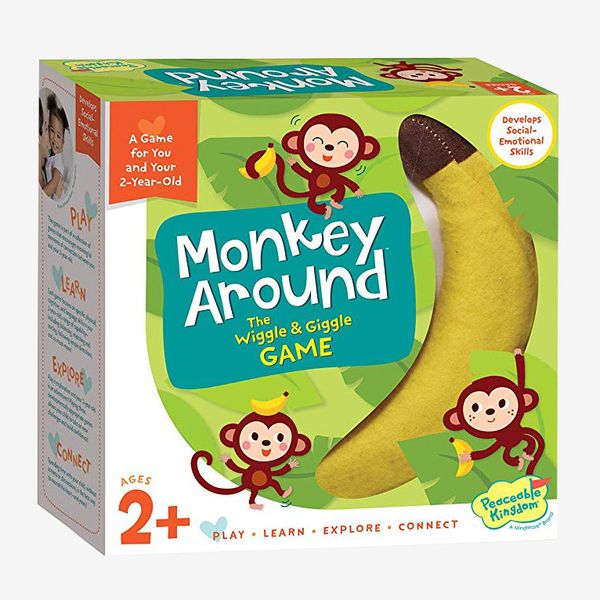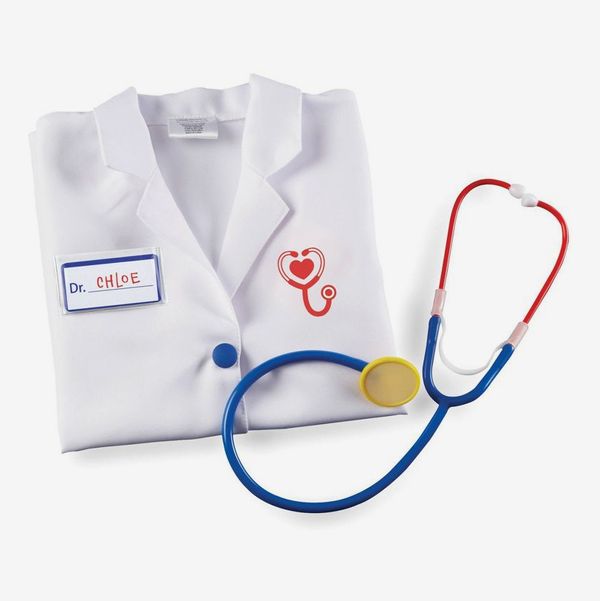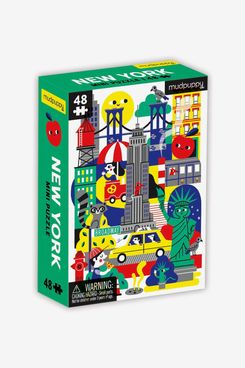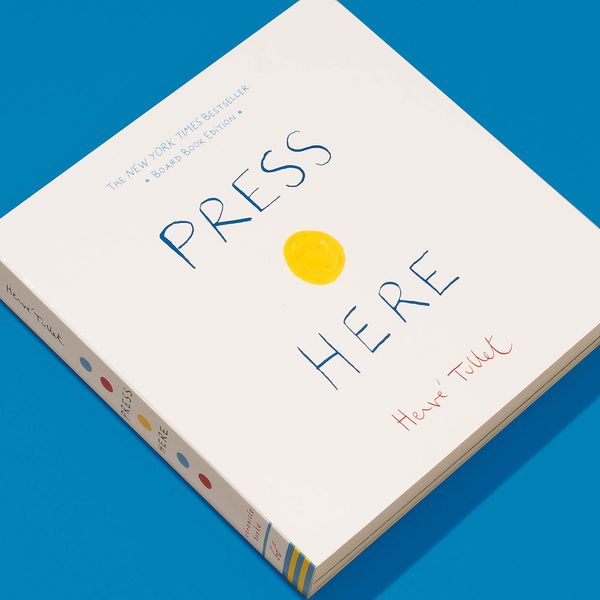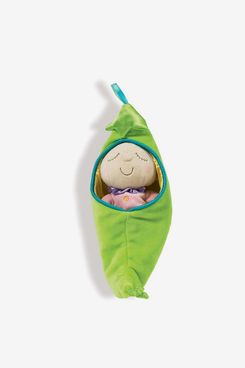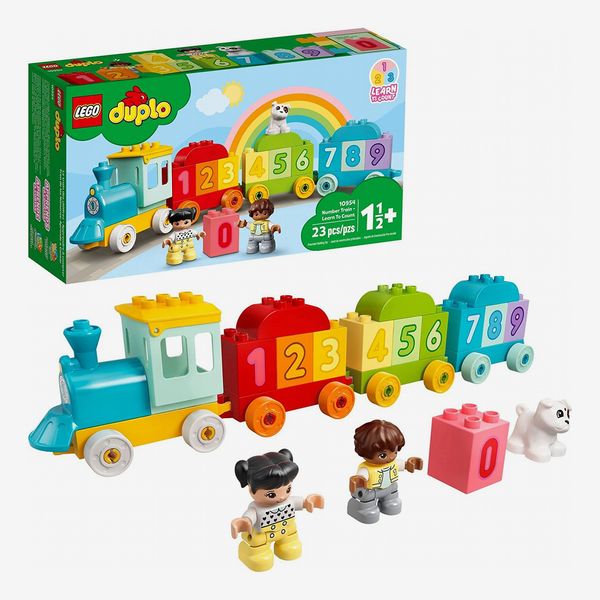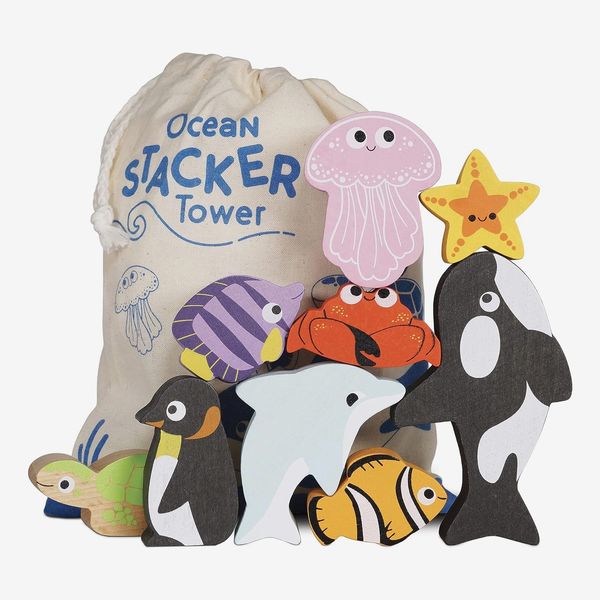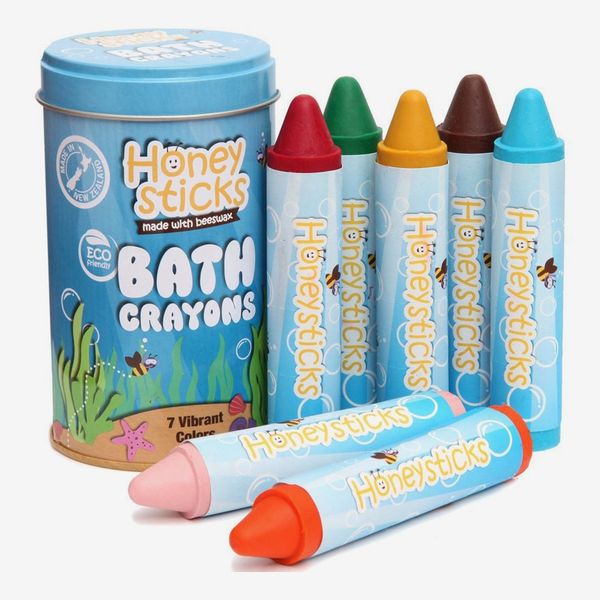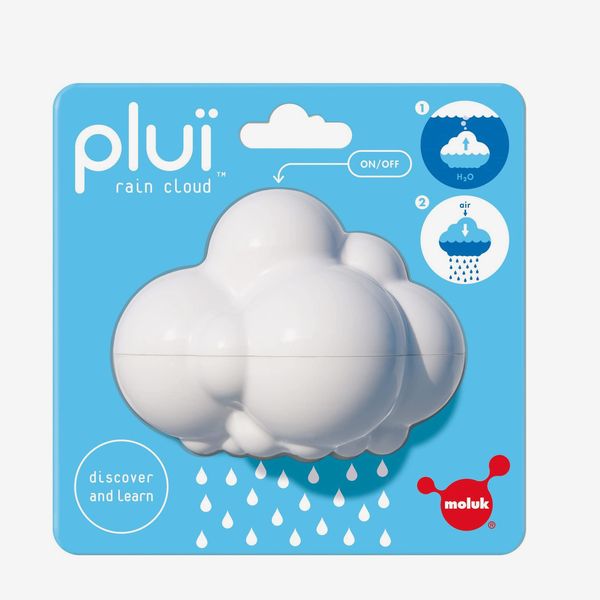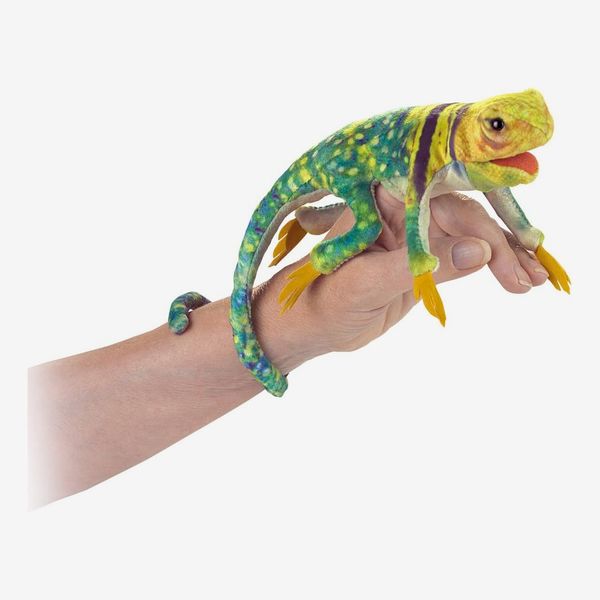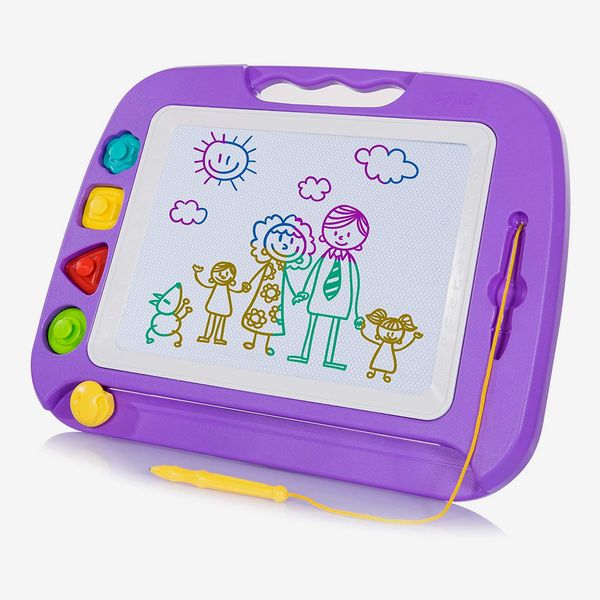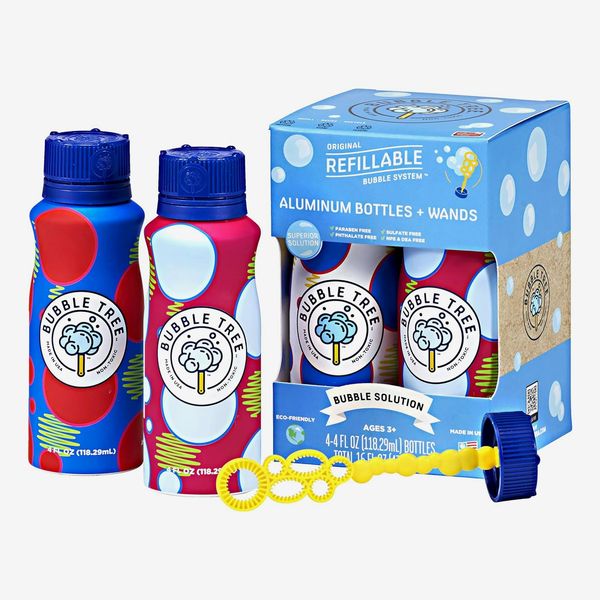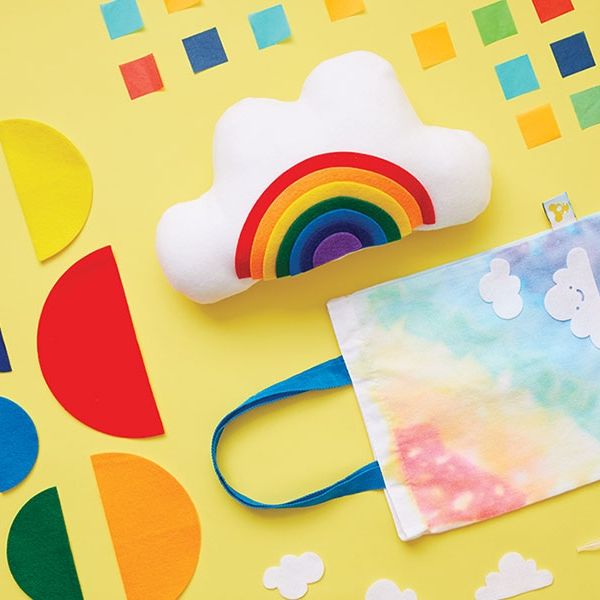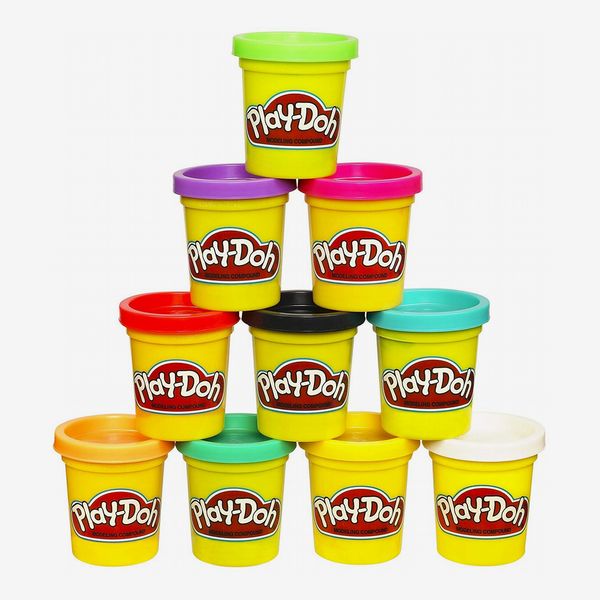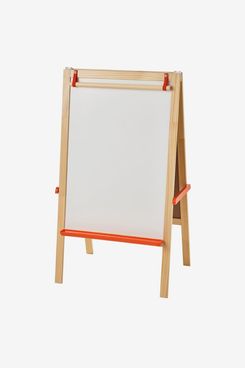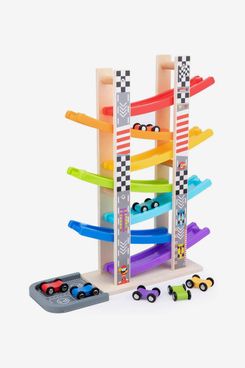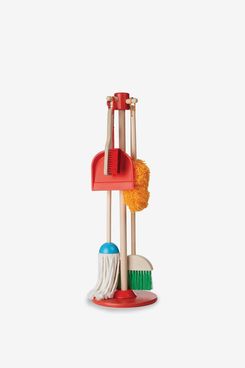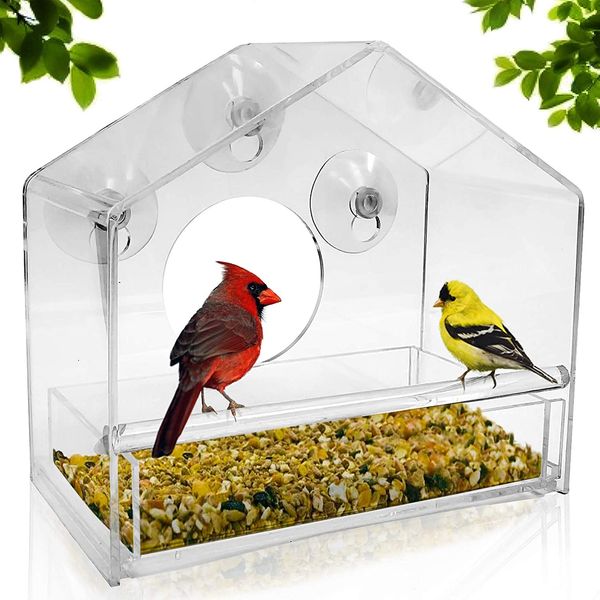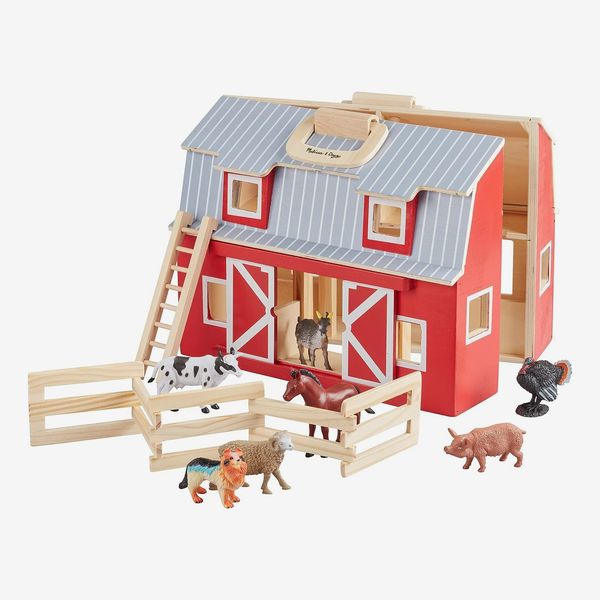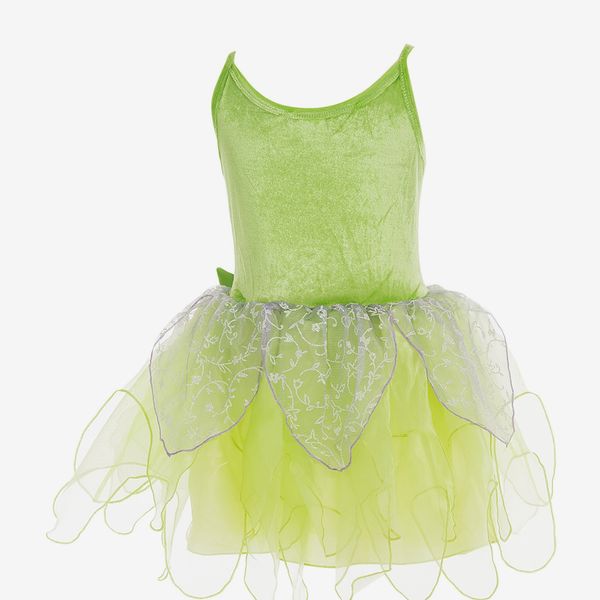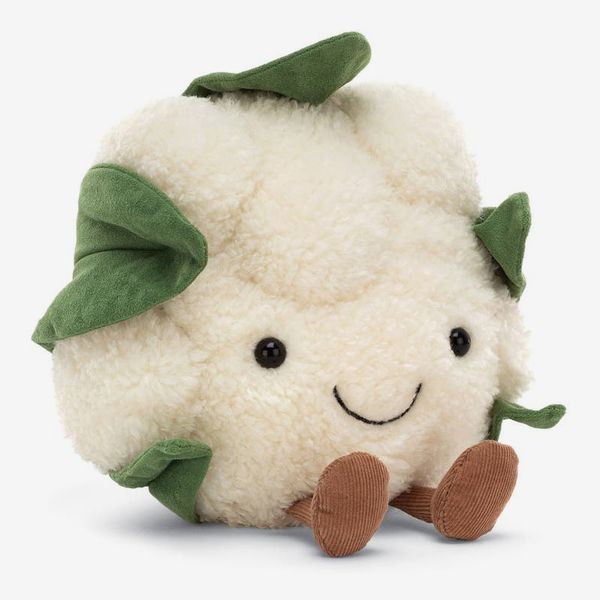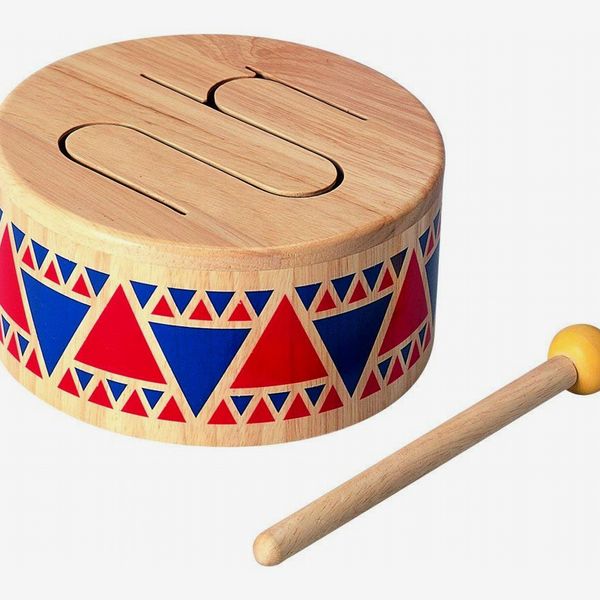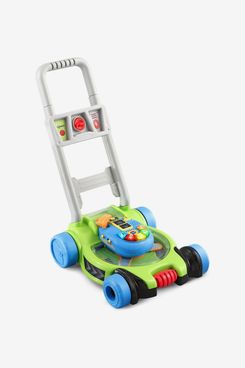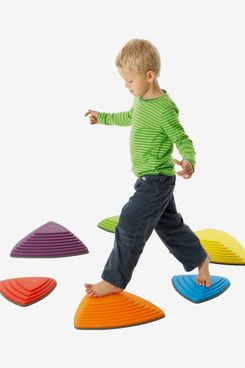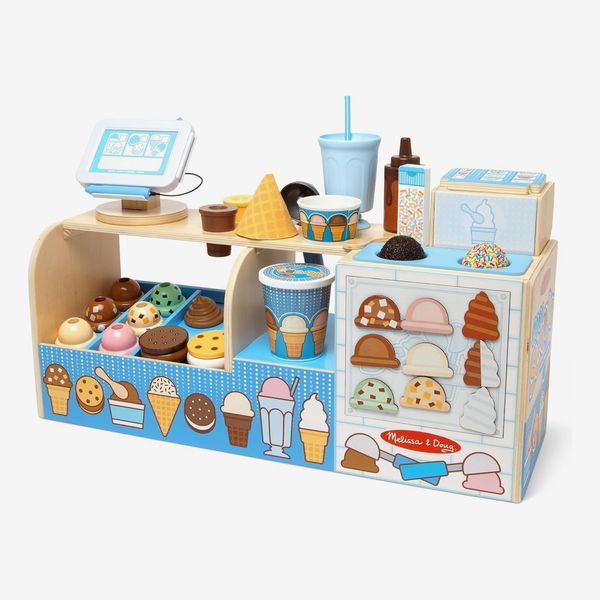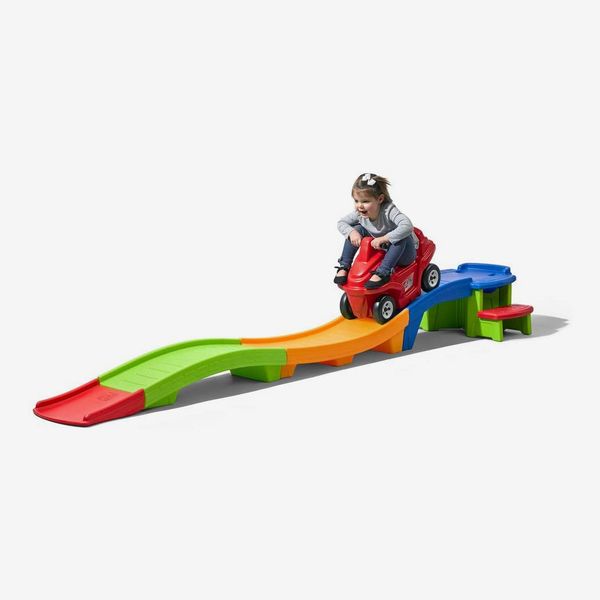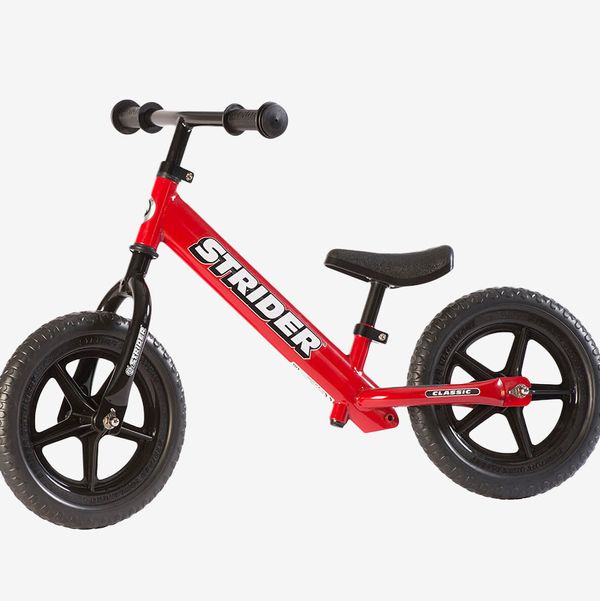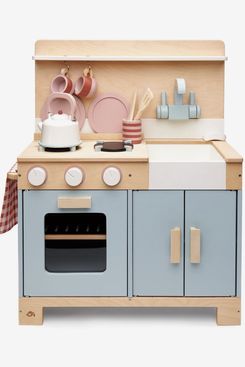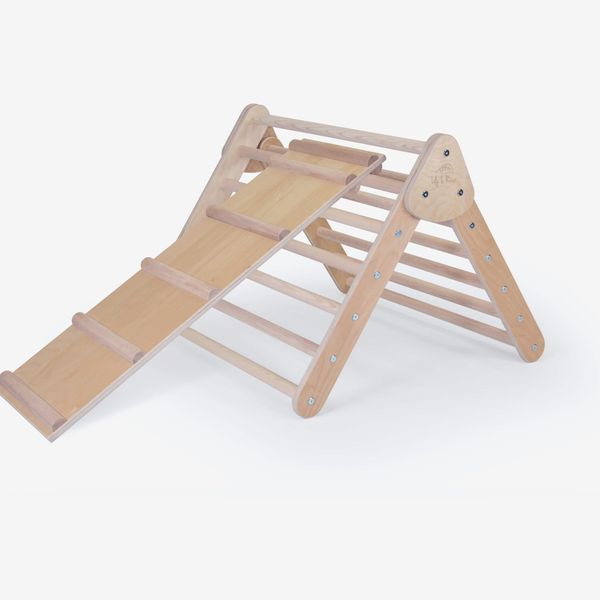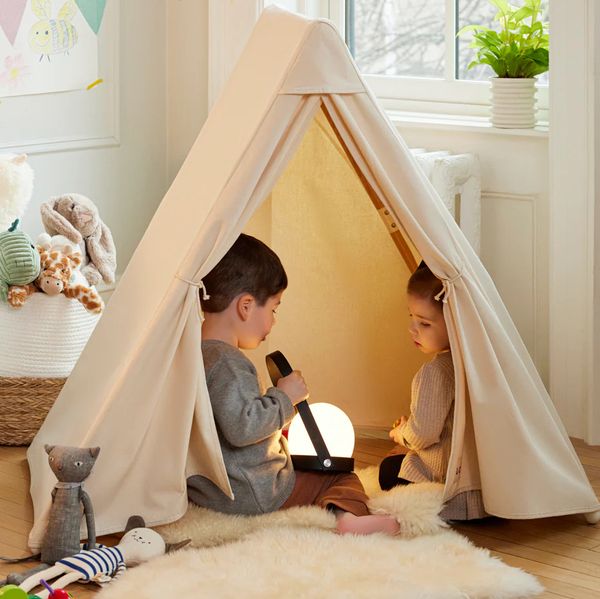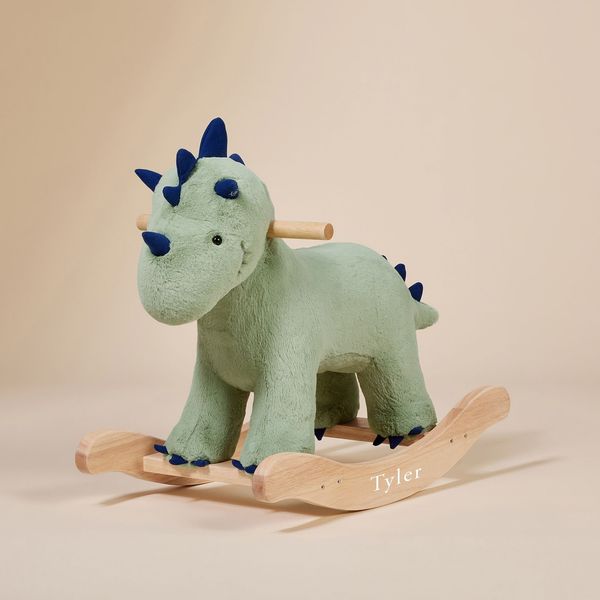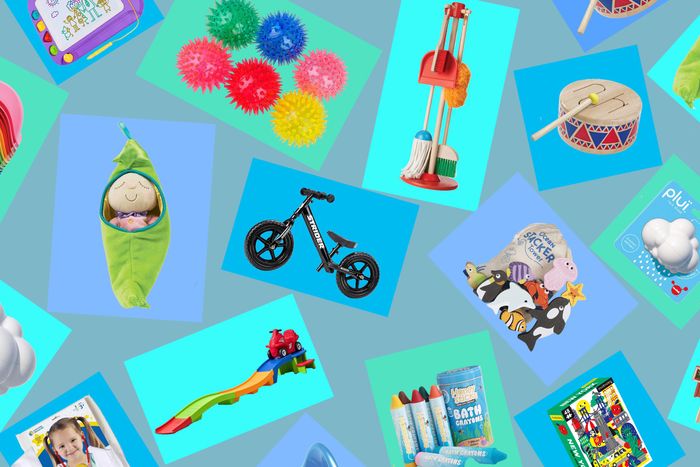
Jump to section
Buying a gift for a 2-year-old requires balancing a bit of knowledge about the skills they are developing with careful study of their personality. According to Jeannette Corey, director of the Bank Street Family Center, 2-year-olds are “seeking independence, so their play often focuses on ways they can have an impact, accomplish a goal, and solve problems.” They are also able to maintain focus for longer periods of time to complete a task like stacking blocks or assembling simple puzzles, she says. And because 2 is the age when children begin to engage in pretend play, Corey recommends toys that let them imagine themselves in the roles of adults and other important people in their lives — from a play kitchen where they can bake a make-believe cake to a miniature lawn mower they can push through the yard.
To find the best toys that fit that bill, I talked to professionals like Corey, as well as stylish and picky parents, toy buyers, and educators, to assemble a list of more than two dozen expert-approved gifts for the 2-year-olds in your life, whether you’re shopping for a birthday, the holidays, or any other day. I’ve organized them by price, so if you have a specific budget in mind, you can use the table of contents to jump to that section — or read all the way through to get an idea of what 2-year-olds are into, according to the people who know them best.
Meanwhile, if you’re also shopping for kids in other age groups, we have gift guides for 1-year-olds, 3-year-olds, 4-year-olds, 5-year-olds, 6-year-olds, 7-year-olds, 8-year-olds, 9-year-olds, 10-year-olds, 11-year-olds, and 12-year-olds — plus the meticulously curated Strategist Toy Store, filled with all our greatest hits.
Under $25
A game that promotes physical activity is always a good thing. A game that promotes social interaction is good too. One that does both? That’s what you have here. “It’s like Twister for toddlers,” says Holly Magelof, toy buyer for the Dolphin Bookshop in Port Washington, New York, who has 20-plus years of experience in the toy-buying industry. “You see the kids wiggling and giggling — it’s consistently a best seller.”
Kelly Harris Smith, founder of the Minni art space for kids in Boston, recommends giving realistic doctor kits and dress-up clothes to encourage toddlers’ empathy and imagination. “My kids loved to pretend to take care of their toys and stuffed animals,” she says. This simple coat-and-stethoscope set is a good choice because it doesn’t include a bunch of small parts toddlers could choke on.
Multiple Strategist editors own copies of this 48-piece miniature New York puzzle, which also comes in Chicago, San Francisco, London, Paris, and Tokyo versions. Former senior editor Kayleen Schaefer bought a few different editions for her 2-year-old son and says he loves them just as much as bigger puzzles, but they take up a fraction of the space and cost just $5.
“Two-year-olds are definitely interested in being read to,” says Dr. Alexandra Figueras-Daniel, an assistant research professor at the National Institute for Early Education Research. And repeating the same text often helps them build awareness of the differing sounds of words. Press Here is just about the most interactive book that Strategist writer and mom of two Lauren Ro has ever read. Almost a game, it encourages finding patterns, making predictions, learning colors, remembering sequences, and having fun with a parent, sibling, or other caregivers. After a few readings, your kid will start to know how and when to clap or tap, making it even more fun each time.
According to Corey, toys that allow children to practice social-emotional skills are important at this age. Dolls provide ample opportunity for nurturing play and talking through big feelings, and this one, recommended by Strategist senior editor Winnie Yang, can be lulled to sleep in its pea-pod-shaped sleep sack.
“Two-year-olds love to kick, so balls are just amazing — big balls, little balls, any balls at all,” says Dr. Kathy Hirsh-Pasek, a professor of psychology at Temple University and co-author of Becoming Brilliant: What Science Tells Us About Raising Successful Children. Corey is also a fan of gifting balls for 2-year-olds because they are a gift that will grow with the child. “Balls are wonderful for 2-year-olds who can roll them and chase them. At age 3, children can practice throwing and catching, while at 4 they might create a game with rules that involves a ball,” she says. When those balls flash and bounce like these do, they’re that much more engaging — plus the soft spikes make them easier to catch and hold.
DUPLOs — LEGO’s larger blocks designed with tiny hands (and mouths) in mind — are great for this age. Trains and cars are already beloved by 2-year-olds, and this affordable set mixes the magic of a freight train with a cheery color scheme and your basic 123s. The result is a gift that is playful, educational, and not hideous for parents to look at, says Ro, whose son Augie received it for his second birthday. As he got older, Augie loved combining his train set with other DUPLO sets to create a mega-train-truck that he dragged all over the house. Like all LEGO products, these are virtually indestructible. And if you want to expand your 2-year-old’s universe, the DUPLO Town World Animals kit has enough pieces for two kids to enjoy at once, including pandas and giraffes, an airplane and pilot, and a canoeing dad and child.
Corey prefers open-ended toys, like building blocks or the DUPLOs above, that can grow with a child as their skills and interests develop. This set of wooden ocean animals is designed to be stacked, teaching toddlers about balance and cause and effect. But they can also spark imaginative play and be used in conjunction with a dollhouse or other toys.
I heard about this set of nontoxic washable bath crayons from wellness entrepreneur Liv Lo Golding, a mom to a toddler with another baby on the way. The chunky beeswax crayons combine the fun of a bath toy and the developmental benefits of drawing and coloring. Plus, they are fragrance-free, easy to hold, and contain only food-grade ingredients, making them a suitable (and safe) choice for young kids and toddlers, who may also use them to draw on themselves.
For regular drawing and scribbling on paper, Emily Motayed Lancaster, co-founder of Nurture& and mom of two, recommends this classic set of washable Crayola markers, which she says are “key for my sanity.”
Here’s a bath toy that has a little science built into it. It’s a favorite of Strategist contributor Regan Stephens and her three girls, the eldest of whom received it as a gift when she was 2 years old and eventually passed it down to her younger sisters. “You fill the toy with water from the tub, then use your finger to plug the little hole on top; when you release your finger, water rains down from tiny holes in the bottom of the cloud,” writes Stephens. “Simple physics, lots of fun.”
Every day-care classroom has its own “It” toys — the ones that all the kids fight over, for whatever reason, some of them seemingly very random (e.g., the blue ice-cream cone in the pretend food bin, the red squares among the Magna-Tiles). But an especially big hit for the 2-year-olds at Tribeca Kindercare, according to teacher Ms. Kelsey, are the finger puppets. Figueras-Daniel also recommends finger-puppet toys for this age group, specifically citing the ones from Folkmanis, like this colorful lizard, because of how realistic they are. In addition to helping kids work on their fine motor skills, puppets can “inspire lots of language, as children can speak through the role of the puppet,” Figueras-Daniel explains. Plus, she says, you can use the puppets to start teaching 2-year-olds about specific animals.
For a no-mess creative toy that’s (somewhat) magical, consider this twist on the classic Magna Doodle drawing board, which Golding says is fun for 2-year-olds to draw on, erase, and repeat. Ro bought one for her son Augie after he became obsessed with the miniature version at a fellow 2-year-old’s birthday party. The bigger size comes with four magnetic stamps that create multicolor shapes on the drawing surface, and Ro notes that its handle makes it easy for tiny hands to carry it into a car, onto an airplane, or just to another room.
Teresa An, design director at Wrangler and mom to 2-year-old Isaac, cites bubbles as one of her son’s favorite toys and therefore one of the gifts she gives most often to other 2-year-olds. “We gift things that Isaac has loved to play with throughout his different stages,” she says. These nontoxic bubbles come in recyclable aluminum bottles with sturdy wands attached to the underside of the lid, so you don’t have to fish it out of the solution. The bottles can be reused and refilled with the brand’s boxed-wine-esque containers of bubble solution, which come in one-, two-, three-, and five-liter sizes.
KiwiCo’s Koala Crates, delivered via monthly subscription at $20 a pop (you can cancel any time), are packed with thematic activities perfect for the rapidly developing 2-year-old: an ocean-themed crate with a fishing game that promotes dexterity, a sea-turtle art project, and more. Dimitri A. Christakis, an M.D. and editor-in-chief of JAMA Pediatrics, says he’s been especially impressed “with how KiwiCo uses the science of child development to promote healthy play grounded in the latest research.” If you’re not ready to commit to the KiwiCo subscription, the brand also has a bunch of developmental toys you can search for by age and buy à la carte.
“It’s fun to feel Play-Doh and to squish it. You may not make anything all that amazing, but who cares? It’s just fun to make a ball and sit and experiment,” says Hirsh-Pasek. Playing with sculpture at this early age is similar to drawing; 2-year-olds are excited by the simple fact that they can manipulate the clay. And it’s a good workout too. “Play-Doh builds dexterity in their hands and finger muscles,” Hirsh-Pasek explains.
“Kids love to paint,” says Golinkoff. “I don’t care if parents get newspaper, butcher paper, or brown paper,” she says, as long as the child is free to do as they please. This Ikea kids’ easel was praised as the best affordable option in our guide to the best art easels. It comes with a built-in storage tray and a dowel to add a roll of paper. The large surface area and short legs makes it easy for 2-year-olds to reach while experimenting with colors and textures. Rebeca Raney, an artist and arts educator, says “every nursery school has multiples of this one,” noting that “Ikea does a super job with their art products.” When you’re not using paper with it for painting and drawing, children can get used to the feeling of drawing with dry-erase markers on one side and chalk on the other.
Under $50
Publicist Alisa Richter’s kid is a huge fan of this racing ramp — so much so that he once played with it for two hours straight, an eternity in toddler time. “It’s a really effective cause-and-effect toy,” she says. “He loves watching two cars go down the ramps and zigzag past each other.” The bright rainbow racetrack includes seven cars in corresponding colors that “jump” from one ramp to another, making “a satisfying click sound,” according to Richter. “My husband calls it a ‘more sophisticated fidget toy,” she says.
As with all Melissa & Doug toys, you can count on this set of cleaning tools to be engaging, well made, and safe for toddlers. It’s a perennial Strategist best seller that I have heard continues to entertain children for years — even if they stop sweeping and start using the broom as a sword or the mast of a cardboard-box pirate ship. Dr. Roberta Golinkoff, a professor of child psychology at the University of Delaware and co-author of Becoming Brilliant (with Hirsch-Pasek), says, “Kids always want to be like big people. So if they see you using something, they’re going to want to do it too.” Toys like this “require children to be active and can spur the development of the imagination.” When used with another child, Golinkoff adds, “they can increase social interaction.”
Figueras-Daniel says there isn’t a specific stage of development when concepts like science or nature really begin to take root in children’s minds, but giving a 2-year-old a bird feeder like this would be a way to “provide them with opportunities to make observations about the world around them.” While they’re certainly not going to go out and put food in it themselves, she says, kids (including her own) enjoy watching the birds visit if the feeder is stuck on a window in their nursery or playroom. “It attracts all kinds of birds when filled,” she says, “We now keep a journal by the window for drawing and keeping track of all the varieties that come to visit.”
Full-size dollhouses take up a lot of space and aren’t ideal for families with small apartments. Instead, Alexis Swerdloff, New York deputy editor and mom to a toddler and an infant, suggests giving a more portable dollhouse like this one from Melissa & Doug that closes up when it’s not in use. It comes in a few different designs, including this wooden barn, a horse stable, and a pink cottage.
“My girls love anything that twirls,” says Natalie Ebel, co-founder of Backdrop and mom of an almost-2-year-old and a 5-year-old. Ebel recommends collecting a wide range of tutus, crowns, wands, capes, and other costumes and dress-up clothes to cultivate a whole universe of pretend play. This Tinkerbell outfit is available in sizes for children from ages 1 to 9 years old.
If you’re looking to give a unique stuffy rather than the typical teddy bear or unicorn, Jellycat plush toys should be No. 1 on your list. The brand’s plush broccoli and later this cauliflower (it also makes an avocado half, a peach, and a pineapple) were a hit with my niece when she had just turned 2. She loved to “eat” the vegetables and offer bites to my brother. Not only is it lots of fun to pretend with the toys, but they’re also adorable, supersoft, and just the right size for toddler hands.
Learning to play any musical instrument can be a great way for young children to develop critical skills like mathematics. But as Hirsh-Pasek admits, a toddler incessantly beating drums is not always music to a parent’s ears. For something that will stimulate a 2-year-old and actually be tolerable for adults to listen to, consider Plan Toys’s lovely little wood drum. “You can drum together and make little drum circles,” adds Hirsh-Pasek.
VTech’s toy lawn mower proves how much kids love emulating adults, or at least — if you’re a city kid whose parents aren’t doing a lot of yard work — emulating the idea of adult things. “Toddlers and preschoolers love to copy their parents’ activities,” says child psychologist Dr. Nicole Beurkens, “which makes ‘mowing’ the lawn with their very own mower an exciting activity for them.” Not only that, says Beurkens, the mower helps with “gross-motor, balance, and visual-perceptual skills.” When you pull the cord, the mower plays mowing sounds, and when you push it, the pretend blade spins and the multicolored beads pop.
Under $100
According to Figueras-Daniel, these rubber “stones” are a fun way to encourage gross-motor skills while introducing an element of make-believe. She says they “imitate real stones, which, if discovered in nature, would surely invite kids to naturally balance while they walk across them.” The pieces can be arranged to make it easy or hard for tots to hop from one to the next, and because they’re compact (the set comes with three large stones and three smaller ones), they are easy to store, she adds. While Figueras-Daniel recommends them for 2-year-olds, that’s just where the fun starts. According Strategist senior editor Jen Trolio, this is the kind of toy that will continue to keep kids engaged for years to come. “My 5-year-old and 8-year-old would absolutely play ‘floor is lava’ with these,” she says.
I often hear from parents that they appreciate wooden toys because they tend to be more environmentally friendly and last a long time. This elaborate Melissa & Doug ice-cream-counter toy combines fine-motor-skills development with elements of pretend play. Lancaster received a version of the set for her daughter long before she turned 2; at first, her daughter just loved mouthing the ice-cream scoops, but as she aged, she began to stack them one by one and now she pretends to be an ice-cream-shop owner, asking what flavor ice cream her parents want and then serving it to them. “I love toys like that — where it can graduate from one type of play to another over time,” Lancaster says.
Many 2-year-olds are coming to terms with the prospect — or the recent arrival — of a new baby brother or sister and could use a little help with adjusting to life with a sibling. So when she found out she was pregnant again, Lancaster got her daughter an American Girl Bitty Baby. “We love watching her practice feeding her doll with her play baby bottles and a baby spoon and food set,” she says. As with the original full-size American Girl dolls, there is an entire universe of accessories you can buy for the Bitty Baby, including clothing, a car seat, a baby carrier, and even a a cup of peas and a snack pouch.
A first train set is a powerful memory for every generation, notes Carey Reilly, a Today show contributor. And the Brio model is worthy of such a formative experience. “I love that the set is wooden, and it’s easy for a child’s little hands to use,” Reilly says. As with all Brio sets, it can be endlessly expanded with accessories and integrated into play with other kits, even many from other brands.
$100 and up
For a bigger thrill, Strategist contributor Steven John recommends this toddler-size ride-on roller coaster. He has watched kids line up one behind the other for the better part of an hour to take turns zooming down the track. That alone says enough about it: Toddlers actually wait for a turn; they love it that much. And as long as a parent is nearby with a watchful eye, it’s perfectly safe for most 2-year-olds to use. Steps on either side of the platform let kids get on the car all by themselves — and the toy is just as fun to ride on level ground for youngsters not ready for the roller-coaster experience. This model, as its name suggests, packs down compactly when the time comes to hide it away.
Balance bikes are a critical step between the trike and the bicycle, helping kids master their balance before worrying about pedaling. “My older son learned how to ride a bike using a balance bike. It allows you to skip training wheels and build their balance naturally,” says Zahra Kassam, founder of the at-home Montessori program Monti Kids. The Strider’s seat can be lowered enough for a kid as young as 18 months or raised high enough to accommodate most 4-year-olds, with age 2 being the sweet spot. Trolio, whose two kids are now 5 and 8 years old, both started riding a Strider at age 2, passing it down from older to younger. And each one ultimately graduated straight to a pedal bike without a single training wheel in between.
Corey looks for toys that offer lots of “opportunities for creativity, curiosity, problem-solving, and cooperation,” and specifically mentioned the importance of toys that support cooking play. Play kitchens come in all shapes and sizes, but this stylish wooden “home kitchen” from Tender Leaf Toys has just the right amount of complexity for a 2-year-old.
“I love gifting the Tender Leaf Toy kitchens,” says Motayed Lancaster, who bought one when her daughter when around one year old. Motayed Lancaster loves the muted colors and how it has helped her daughter begin to role-play; now, at age two, her daughter is verbalizing what kind of dishes she makes with the accessories: “Here mama, some fish!” And then putting them on a plate and handing it to her. The kitchen can also be combined with other appliances like a refrigerator or stand mixer to build a more complete set.
This wooden structure ladder and ramp, called a Pikler Triangle, is often associated with Montessori classrooms, not only because of its natural wood design but also because of the way it helps children from 6 months to 6 years practice gross motor skills. Dr. Giselle Tadros, a physical therapist and the founder of In-Home Pediatric Physical Therapy of New Jersey, recommended it as one of the best climbing toys, saying that it’s “really good for promoting concentration, independence, and grip and core strengthening.” Active toys like this usually require extra space, but Strategist senior editor Ailbhe Malone found she can easily fold her daughter’s Pikler triangle and ramp to stash them behind furniture in her small living room. And it’s so easy to put back together that her almost-2-year-old daughter has taken to going and grabbing the ramp piece by herself.
As they begin to seek some independence, 2-year-olds will benefit from a private play space where they can find quiet refuge with their books and stuffed animals. Lalo’s natural canvas play tent is spacious enough for several toddlers and their toys, is easy to set up (the tent can be purchased on its own or as an add-on to the Lalo play gym), and won’t add to the visual clutter of a playroom. I love the look of it in my son’s room (Lalo sent me one to test out) and that it will grow with him as he develops. At the moment he mostly just crawls in and out of it and plays with opening and closing the flaps. But play tents like this are still fun for kids up to 4, 5, and 6 years old. The canvas is heavy-duty and the wooden frame feels sturdy without weighing a lot or taking up loads of space. And when you’re tired of having it up, it folds down flat enough to slide under a couch or bed.
Whenever possible, Corey prefers to match gifts to a 2-year-old’s emerging interests. “If they love dinosaurs, for instance, I am going to choose toys that tie into that,” she says. While there is no shortage of dinosaur-themed toys, this Strategist-approved rocker with head and tail spikes that light up is both delightful and unexpected. Plus, it encourages healthy motor development by requiring kids to climb up and self-propel.
Additional reporting by Lauren Ro.
The Strategist is designed to surface the most useful, expert recommendations for things to buy across the vast e-commerce landscape. Some of our latest conquests include the best gifts for 1-year-olds and 3-year-olds, the best art supplies and dress-up clothes for kids, and the best toy storage. We update links when possible, but note that deals can expire and all prices are subject to change.
If you buy something through our links, New York may earn an affiliate commission.

